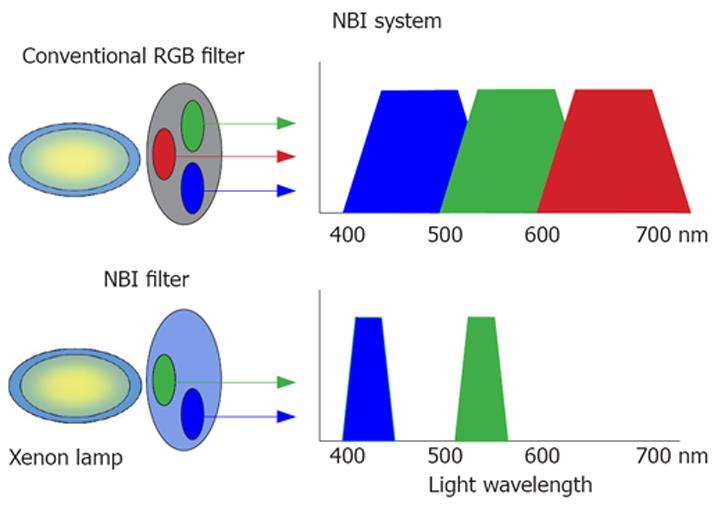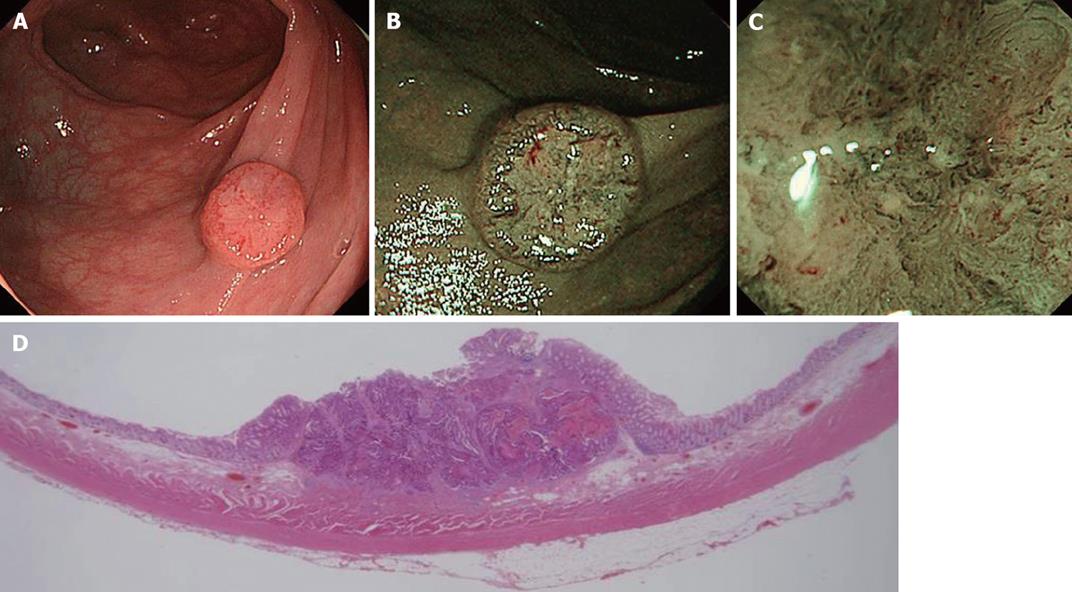Copyright
©2008 The WJG Press and Baishideng.
World J Gastroenterol. Aug 21, 2008; 14(31): 4867-4872
Published online Aug 21, 2008. doi: 10.3748/wjg.14.4867
Published online Aug 21, 2008. doi: 10.3748/wjg.14.4867
Figure 1 NBI system.
Different from the conventional RGB filter, the NBI filter consists of two narrow bands (415 ± 30 nm and 540 ± 30 nm, respectively) that make it possible to observe clearly superficial vascular patterns for clinical evaluation.
Figure 2 NBI colonoscopy image with non-sequential system.
A: Conventional view of an Is polyp, 12 mm in diameter located in the sigmoid colon; B: NBI view clearly showing the superficial meshed vascular pattern on the polyp’s surface indicating an adenomatous polyp.
Figure 3 NBI colonoscopy image with sequential system.
A: Conventional view of an IIa polyp, 20 mm in diameter located in the rectum; B: Meshed capillary vessels are clearly seen using magnifying NBI as dark brown areas diagnosing an intramucosal cancer.
Figure 4 NBI image of colorectal cancer.
A: Conventional view of an IIa + IIc lesion, 12 mm in size, located in the transverse colon; B: NBI view shows a well demarcated area and meshed capillary vessels clearly visible characterized by thick diameter, branching and curtail irregularity; C: Magnifying NBI view additionally shows the presence of a nearly avascular or loose microvascular area due to histological desmoplastic changes in the stromal tissue, suggesting deep submucosal invasion; D: Histopathological analysis revealed an adenocarcinoma invading deeply into the submucosa (2500 μm) with lymphovascular invasion.
- Citation: Emura F, Saito Y, Ikematsu H. Narrow-band imaging optical chromocolonoscopy: Advantages and limitations. World J Gastroenterol 2008; 14(31): 4867-4872
- URL: https://www.wjgnet.com/1007-9327/full/v14/i31/4867.htm
- DOI: https://dx.doi.org/10.3748/wjg.14.4867












